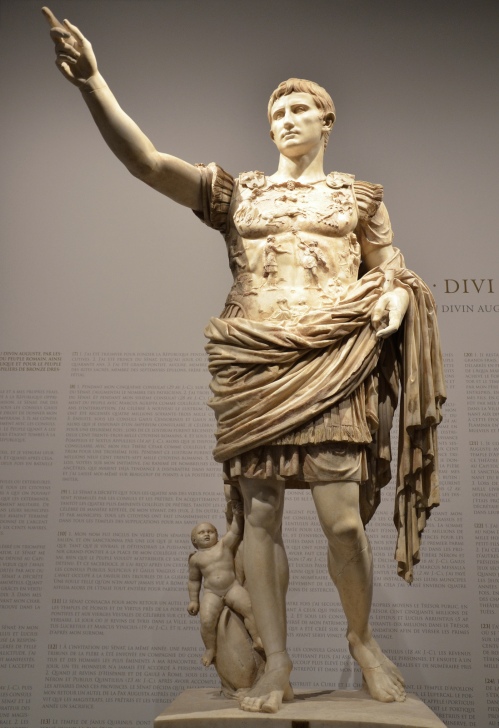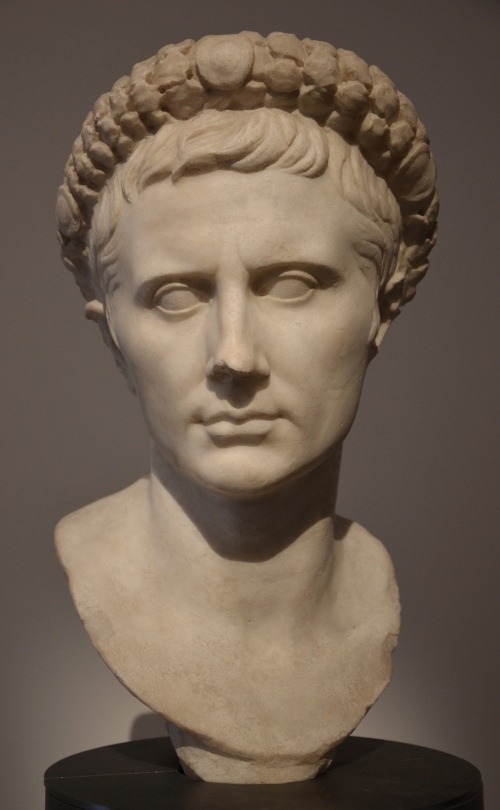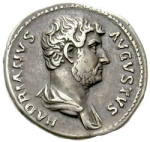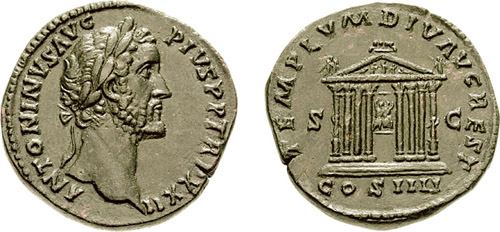This year marks the bimillennial anniversary of the death of the first Roman emperor, Augustus. He died on 19th August AD 14 at the age of 75 after a 41-year reign, the longest in Roman history.
Augustus left his mark on Rome and western civilisation like few others. He vastly expanded the Roman Empire, established a period of relative peace known as the “Pax Romana” (or “Pax Augusta”), a period of immense architectural and artistic achievement whose effects were felt far beyond the capital. His legacy is perhaps best represented in the abundance of statues that were erected throughout the empire during and after his reign.
Portraits of Augustus were used as symbols of his political propaganda. Abandoning the realistic style of the Republican period, his portraits always showed him as an idealized young man. This would set the standards for imperial portraiture used by Roman emperors over the next three centuries.
The Roman historian Suetonius (The Lives of the Caesars , Book II, “Augustus”) describes Augustus as
“remarkably handsome and of very graceful gait. His teeth were small, few, and decayed; his hair, yellowish and rather curly; his eyebrows met above the nose; he had ears of moderate size, a nose projecting a little at the top and then bending slightly inward, and a complexion intermediate between dark and fair.”
Suetonius also mentions that Augustus cared so little about his personal appearance and particularly his hair, that sometimes he would have two or three barbers working on it together to save time. However most of the portraits of Augustus idealize him dramatically, and he does not age over the length of his reign.
More than 200 images of Augustus survive, more than of any other emperor. The longevity of his reign, his popularity during his lifetime, his deification after his death, and the tendency of following emperors to be identified with him (including Hadrian) are factors that guaranteed an abundance of portraits of this man.
In addition to the famous statue of Augustus from Prima Porta (a larger-than-life, idealized statue of him in military dress – image above), here is a selection of 12 of Octavian-Augustus finest surviving portraits:
1. Bust of Octavian

Bust of Octavian, probably created ca. BC 31 after his victory at the Battle of Actium Rome, Musei Capitolini © Carole Raddato
2. Head of Octavian
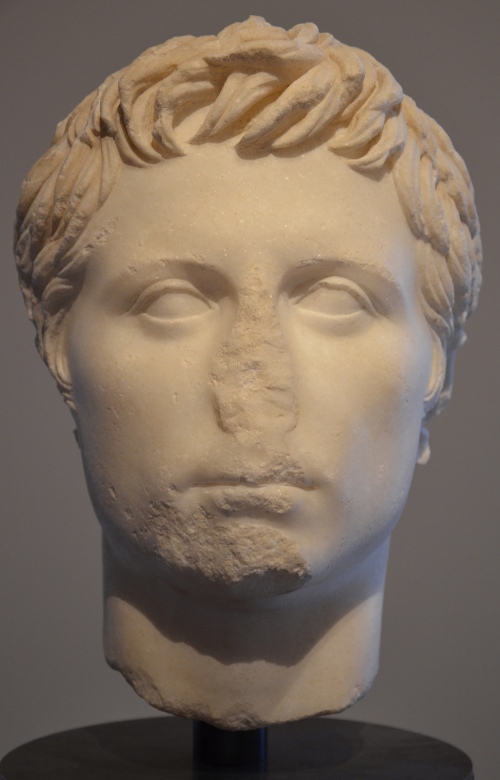
Head of Octavian, dating to the Triumvirate at the time of the Battle of Philippi (42 BC), the oldest portrait known Museo Archeologico Statale di Spoleto © Carole Raddato
3. Equestrian Statue
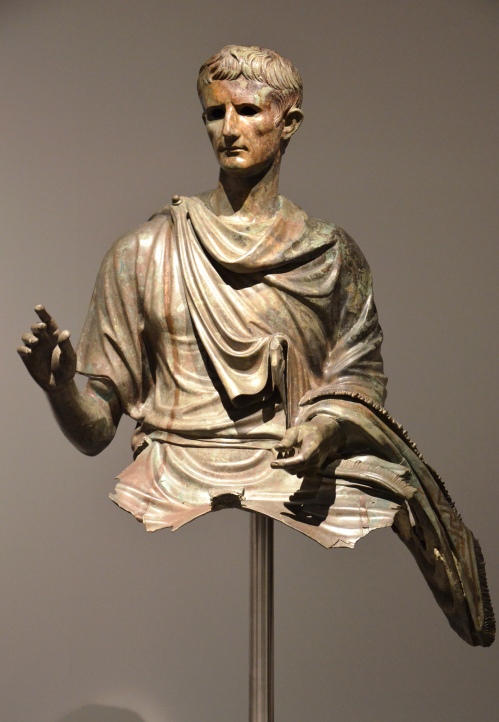
Fragment of a bronze equestrian statue of Augustus dating from the end of the 1st century BC © Carole Raddato
4. Bronze Head

Bronze head from an over-life-sized statue of Augustus, found in the ancient Nubian site of Meroë in Sudan, 27 – 25 BC © Carole Raddato
5. Augustus as Pontifex Maximus
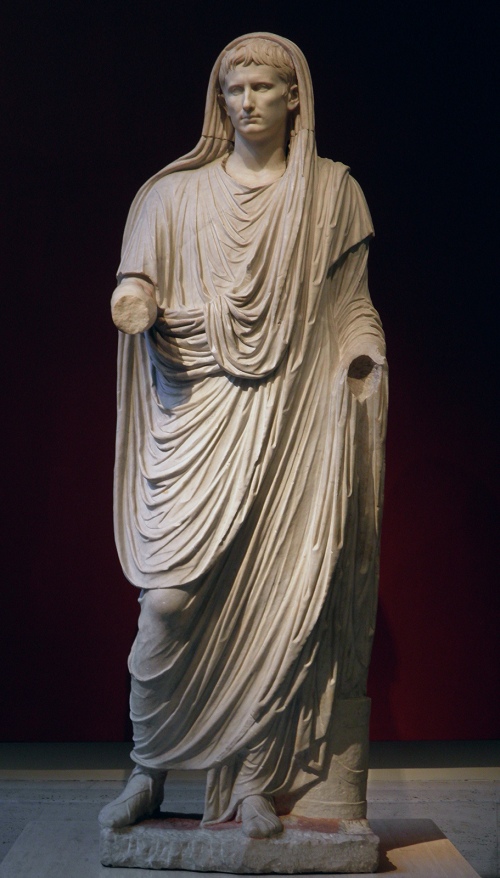
Augustus as Pontifex Maximus, late Augustan period, Palazzo Massimo alle Terme, Rome © Carole Raddato
6. Veiled head of Augustus
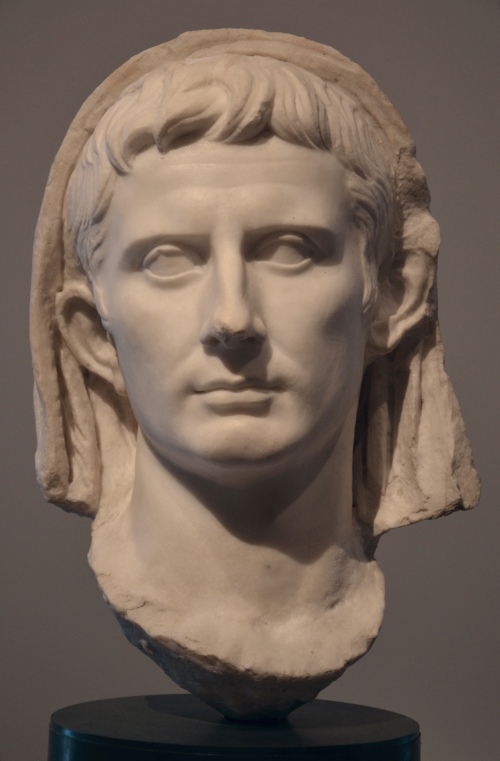
Veiled head of Augustus, end of 1st century BC Ancona, Museo Archeologico Nazionale delle Marche © Carole Raddato
7. Cameo of Augustus
8. Bust of August wearing the Corona Civica
9. Statue of Augustus from Arles

Marble statue of Augustus, found in the Roman theatre in 1750 Arles, Musée de l’Arles et de la Provence antiques © Carole Raddato
10. Augustus Bevilacqua
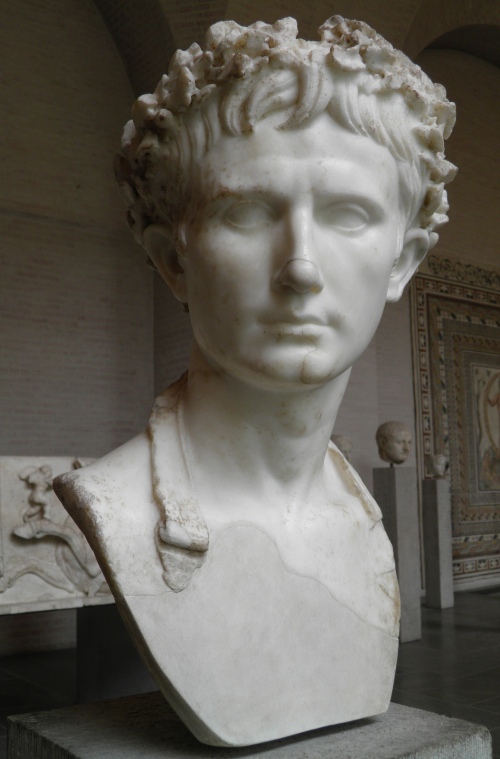
The so called “Augustus Bevilacqua”, bust of the emperor Augustus wearing the Corona Civica, Glyptothek, Munich © Carole Raddato
11. Bust of Augustus wearing the Corona Civica

Bust of August wearing the oak crown discovered on the site of the Roman villa of Chiragan, BC 19-18 Toulouse, Musée Saint-Raymond © Carole Raddato
12. Posthumous portrait of Augustus

Posthumous portrait of Augustus, discovered in Saintes (France), ca. AD 40 Saintes, Archaeological Museum © Carole Raddato
Augustus was an important role model for Hadrian. He had a portrait of the first Princeps on his signet ring and kept a small bronze bust of him among the images of the household gods (Lares) in his bedroom. In restoring Augustan buildings at his own expense in Rome and in the provinces – ie. the temple of Augustus at Tarragona- Hadrian was able to revive the memory of Augustus and associate himself with that name. (Souce: Hadrian: The Restless Emperor)
He wished to be seen as the new Augustus. The imperial coinage of Hadrian drastically abbreviates Hadrian’s titulare. Instead of the usual “Imp. Caesar Traianus Hadrianus Aug.”, he would soon be presented simply as “Hadrianus Augustus”.
Antoninus Pius, who was perhaps motivated by a desire to be publicly associated with the first emperor, restored the Temple of Divus Augustus built to commemorate the deified first Augustus. The restored temple was shown on coins which depict it with an octostyle design with Corinthian capitals and two statues – presumably of Augustus and Livia – in the cella. The pediment displayed a relief featuring Augustus and was topped by a quadriga.
Many more portraits of the Emperor Augustus can be viewed from my image collection on Flickr.
Source: Following Hadrian
